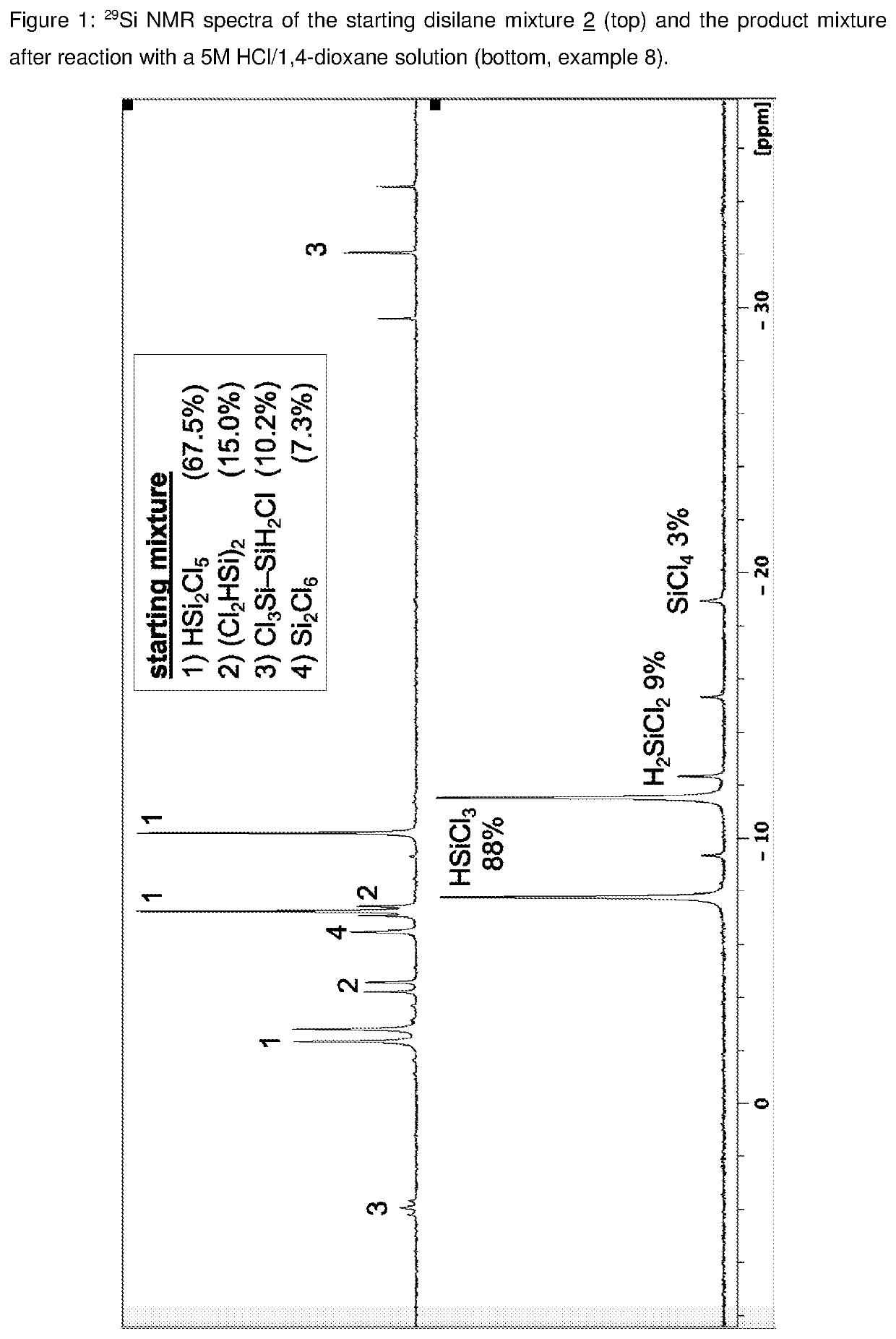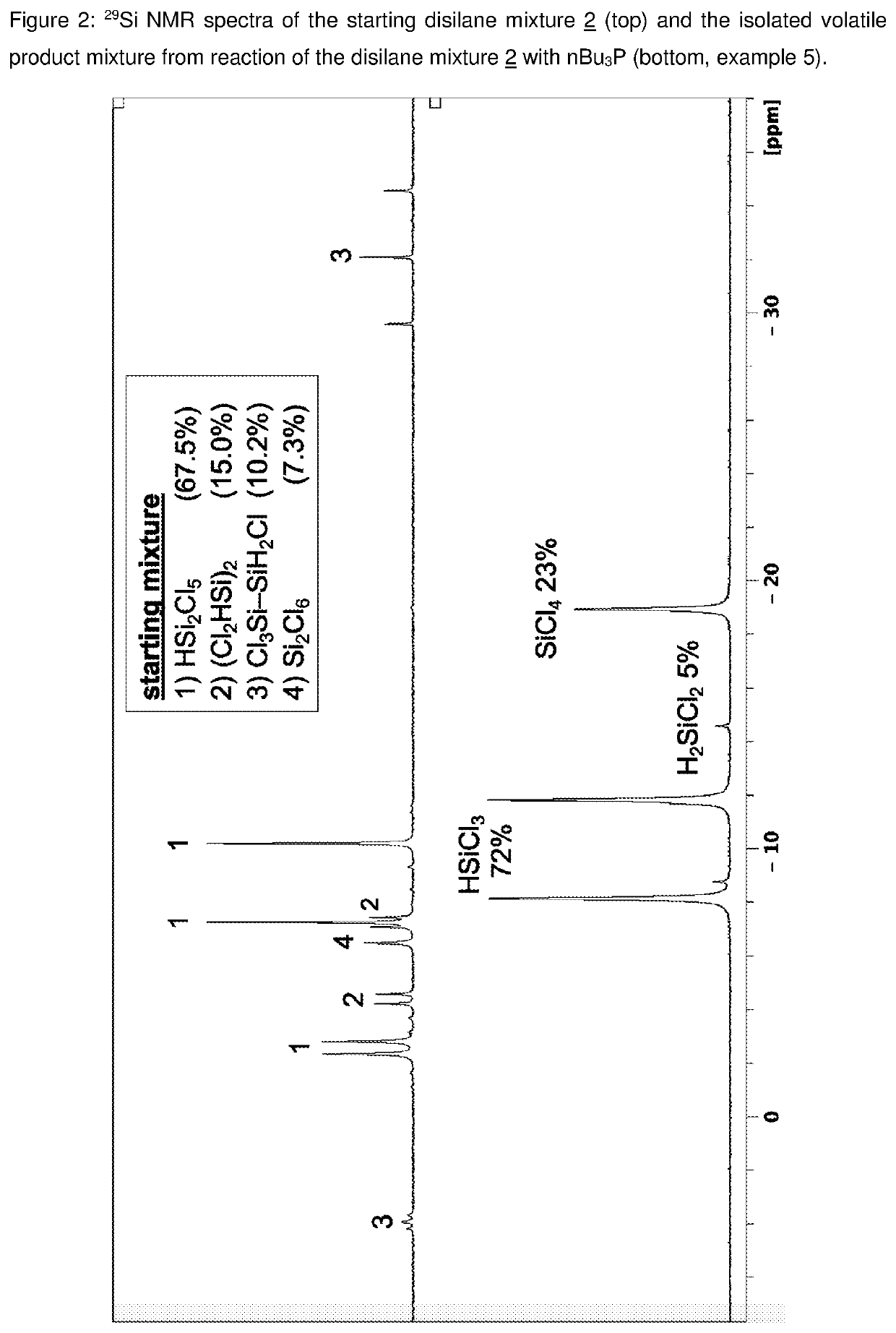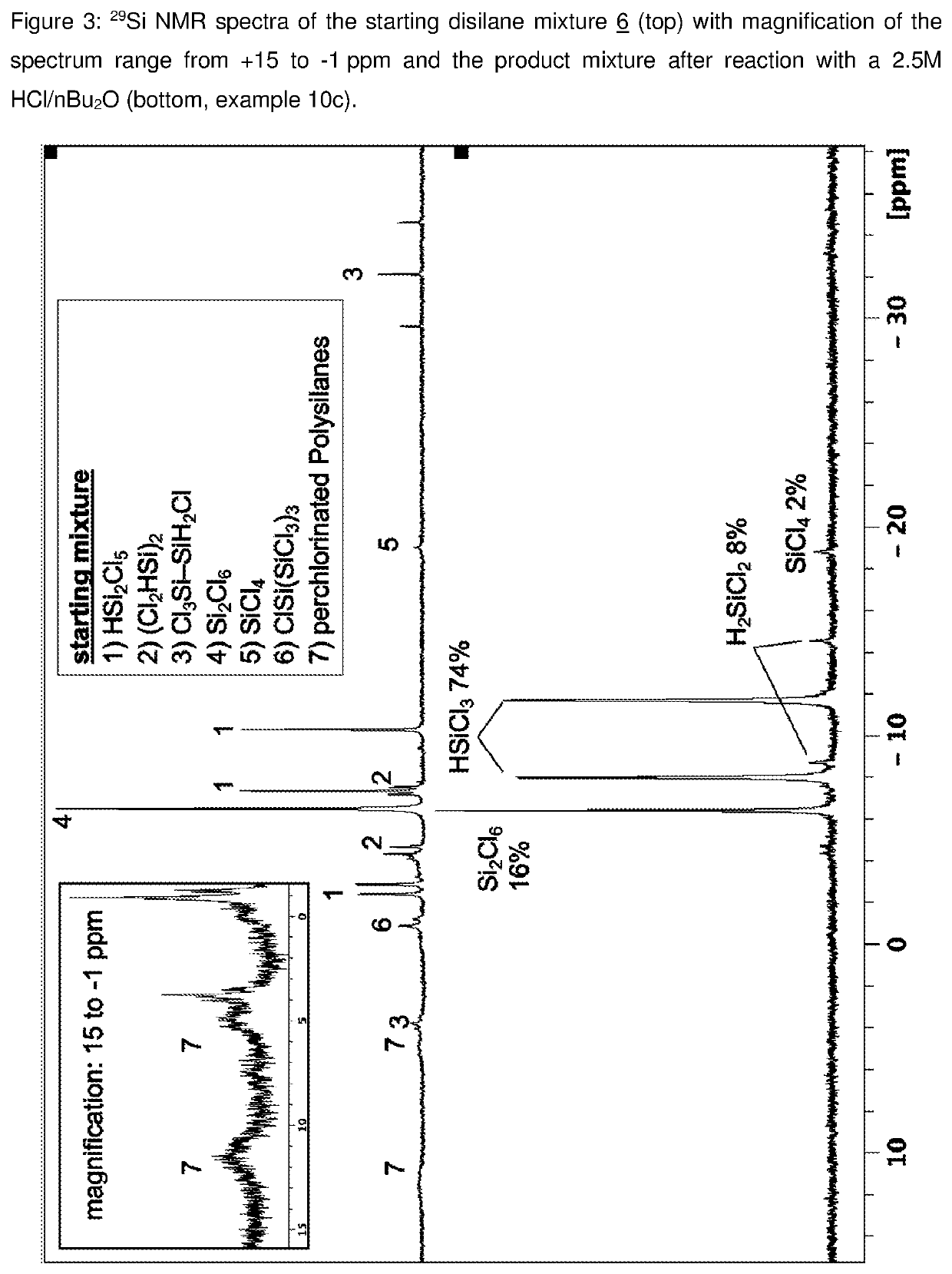Low temperature process for the safe conversion of the siemens process side-product mixture to chloromonosilanes
a technology of chloromonosilane and process side products, which is applied in the direction of halogenated silanes, inorganic chemistry, chemistry apparatus and processes, etc., can solve the problems of avoiding the extremely dangerous handling of so-called, avoiding severe accidents, and improving product yields. , the effect of improving the product selectivity of the conversion
- Summary
- Abstract
- Description
- Claims
- Application Information
AI Technical Summary
Benefits of technology
Problems solved by technology
Method used
Image
Examples
example 8
): Reactions of Disilane Mixture 2 with a HCl / 1,4-Dioxane Solution (5M)
[0279]0.1 ml of the disilane mixture 2 (silane distribution is depicted in Table 1) and 0.2 ml of a 5M HCl / 1,4-dioxane solution were admixed together with 0.4 ml C6D6 in an NMR tube. The NMR tubes were cooled to −196° C., evacuated and sealed. The sample was allowed to react at r.t. for 7 h, analyzed by NMR spectroscopy and further heated according to Table 13.
TABLE 13Reactions of disilane mixture 2 with a HCl / 1,4-dioxane solution (5M).*)r.t.80° C.120° C.silane7 h+7 h+72 hHSiCl385.383.1 87.5H2SiCl25.97.69.3SiCl40.93.83.2Si2Cl61.7——(Cl2HSi)26.05.5—*)plus “+” means in addition to the afore mentioned reaction time, compositions in mol-%.
[0280]Notably, Si—Si bond cleavage of hydridochlorodisilanes with concentrated HCl / ether solutions occurs very rapidly already at r.t.. In this experiment, cleavage of remaining disilanes afforded prolonged reaction times at higher temperatures due to a very low HCl concentration, bu...
embodiment 1
[0294]A process for the production of chlorosilanes of the general formula (I)
H4-nSiCln (I)[0295]wherein n=2, 3 and 4, preferably n=3,
[0296]by reacting a starting material composition comprising one or more of the substrates selected from
[0297]A) disilanes of the general formula (II)
HoSi2Cl6-o (II)[0298]wherein o=0-6, preferably o=0-2, most preferably 0-1,[0299]and wherein for one or more disilanes o≥1,
[0300]and optionally further comprising
[0301]B) disiloxanes of the general formulae (III) or (IV)
(HpSi2Cl5-p)2O (III)
(HqCl3-qSi)2O (IV)[0302]wherein p=0-5, preferably p=0-1, q=0-2, more preferably q=0-1,
[0303]C) chloromonosilanes of the general formula (V)
SiHrCl4-r (V)[0304]wherein r=0-2, preferably r=0-1, most preferably r=0,
[0305]D) perchlorinated oligo- and polysilanes of the general formula (VI)
SisCl2s+2 (VI)[0306]wherein s=3-6,
[0307]E) chloro-, hydrido- and hydroxy-substituted polysilanes, including linear, branched, cyclic and cage-like chloro-, hydrido- and hydroxy-substi...
embodiment 2
[0324]Process according to embodiment 1, wherein the disilane with o≥1 is pentachlorodisilane, more preferably the disilanes with o≥1 are pentachlorodisilane and one or two tetrachlorodisilane isomers, even more preferably the disilane with o≥1 is pentachlorodisilane, wherein hexachlorodisilane is also present in the starting material composition, and most preferably the disilanes with o≥1 are pentachlorodisilane and one or two tetrachlorodisilane isomers, wherein hexachlorodisilane is also present in the starting material composition.
PUM
| Property | Measurement | Unit |
|---|---|---|
| temperatures | aaaaa | aaaaa |
| composition | aaaaa | aaaaa |
| temperatures | aaaaa | aaaaa |
Abstract
Description
Claims
Application Information
 Login to View More
Login to View More - R&D
- Intellectual Property
- Life Sciences
- Materials
- Tech Scout
- Unparalleled Data Quality
- Higher Quality Content
- 60% Fewer Hallucinations
Browse by: Latest US Patents, China's latest patents, Technical Efficacy Thesaurus, Application Domain, Technology Topic, Popular Technical Reports.
© 2025 PatSnap. All rights reserved.Legal|Privacy policy|Modern Slavery Act Transparency Statement|Sitemap|About US| Contact US: help@patsnap.com



